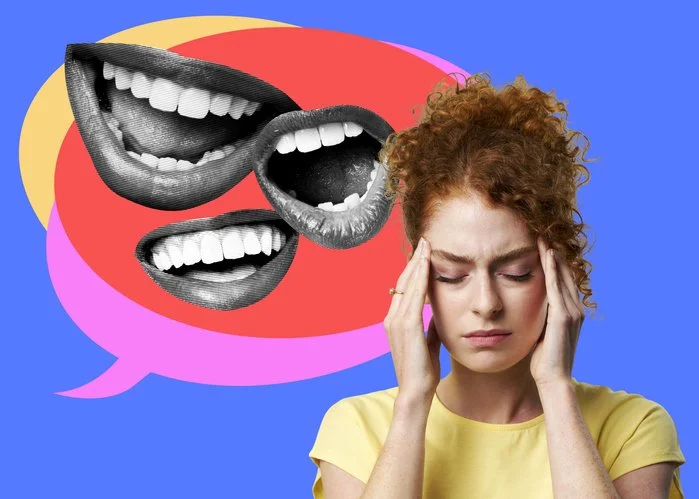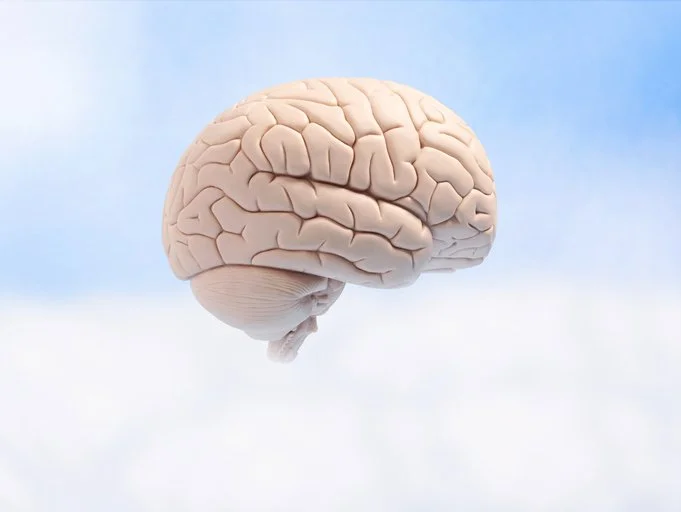The Biology of Acceptance: How It Changes Your Brain
By Joy Stephenson-Laws, Holistic Coach, J.D., Founder
"Just accept it."
You've probably heard this advice about pain, difficult feelings, or situations you can't change. But what actually happens in your body when you accept something instead of fighting it?
Turns out, a lot. And scientists can now see exactly what's going on. Acceptance isn't just a nice idea—it's a real biological change in your brain and body.
When You Fight Reality
Let's start with what happens when you resist.
You have a headache that won't quit. Someone says something hurtful. Your brain's alarm system—the amygdala—immediately goes off like a smoke detector screaming "PROBLEM! Fix it NOW!"
What happens next:
Stress chemicals flood your body (cortisol and adrenaline)
Your heart races
Muscles tighten
Breathing gets shallow
Your mind spins: "I can't handle this" or "This has to stop"
This is your emergency response, designed to help you run from danger or fight a threat.
The problem? What if you can't run or fight? What if it's a feeling, chronic pain, or something that already happened?
Then you're stuck revving the engine while your car is in park. You burn energy but go nowhere. Scientists call this "suffering on top of suffering"—the original problem plus all the pain from fighting it.
Key Point: Your brain treats emotional pain the same as physical danger. Even when you're just worried, your body acts like you're being chased by a lion.
What Acceptance Actually Does
When you truly accept something—letting it be what it is without trying to fix or escape it—multiple systems in your brain shift.
Your Calm Brain Takes Over
The front part of your brain (prefrontal cortex) becomes more active. This is the part that helps you think clearly and stay calm. It's like a wise voice saying: "Yes, this is hard. But we're okay."
A 2016 study showed people who practice acceptance have stronger connections between this calm area and their alarm system. They literally get better at turning down the panic.
The Worry Stops Spinning
Yale researchers found that acceptance quiets the brain network responsible for rumination and worry. Instead of "Why me? What if it gets worse?"—your mind gets quieter. You can know something is hard without drowning in stories about it.
Your Body Relaxes
Acceptance activates your "calm down" system. The vagus nerve—running from your brain through your body—sends the message: "False alarm. Stand down."
What this feels like:
Heart rate steadies
Breathing deepens naturally
Muscles release
Your body stops preparing for battle
Pain Hurts Less
Brain scans reveal something remarkable: when people accept pain, the part of the brain that senses it stays active, but the part that makes it feel terrible calms down dramatically.
Wake Forest researchers found acceptance changes how the brain processes pain. It's the difference between "This pain is unbearable" and "There is pain happening." Both acknowledge it, but one creates far less suffering.
Your Chemistry Changes
Acceptance triggers your brain to release:
More GABA (calming chemical)
More serotonin (mood regulator)
Natural pain relievers
Less cortisol (which damages your brain over time)
Bottom Line: Acceptance doesn't eliminate problems. It stops your body from treating every difficulty like a life-threatening emergency.
Your Brain Can Change Shape
Practice acceptance regularly and your brain physically changes.
A 2011 Massachusetts General Hospital study found that just eight weeks of mindfulness practice led to measurable changes:
Got bigger: Areas for calm thinking, memory, and body awareness
Got smaller: The amygdala (your alarm system)
Your brain is like a muscle. The parts you use grow stronger. Practice acceptance and your "calm and wise" areas develop while your "panic button" shrinks.
The Paradox That Changes Everything
Here's what seems weird: acceptance doesn't make hard things disappear. Pain still hurts. Sad things are still sad. Anxiety is still there.
So what's the point?
You stop creating extra suffering on top of the original problem. When you fight, you add stress, frustration, exhaustion, fear, and endless mental stories. Acceptance removes all that extra weight.
And here's the twist: when you stop fighting, things often actually change. A nervous system not in constant panic can think clearly, have more energy, and make better choices. Pain you're not battling bothers you less. Feelings you allow tend to move through instead of getting stuck.
Try It Now: 2-Minute Practice
1. Pick something small
Mild discomfort—tension in your shoulders, a worried thought. Start small.
2. Notice your resistance
Where are you tight? Jaw clenched? Mind trying to fix or push it away?
3. Let it be there
Don't try to change it. Just say: "This is here right now. I can let it be here."
4. Notice what shifts
Does breathing change? Does anything soften? You're not forcing—just observing.
5. Come back to now
Notice a sound, your feet on the floor, the air temperature.
That's it. Notice what happens when you stop revving the engine.
Why This Matters
Understanding acceptance's biology shows you it's not weak or passive. You're:
Activating powerful brain systems
Strengthening stress-handling abilities
Literally reshaping your brain
Taking control in the way that actually works
It also explains why acceptance is hard. You're changing brain patterns built over years. The resistance response is fast and automatic. Acceptance requires the slower, thinking brain and must be learned.
But every time you pause and let something be—even for ten seconds—you're training this response. You're teaching your brain a new way.
The Real Story
Acceptance isn't giving up or pretending everything is fine.
It's letting your brain stop treating every uncomfortable thing like an emergency. When you do:
Your alarm quiets
Your body relaxes
Your mind clears
You have energy for what actually helps
You respond from calm instead of panic.
That's not just wisdom. That's what your biology is designed to do.
Your brain already knows how. It's waiting for you to stop fighting long enough to let it happen.
Next time you catch yourself revving that engine in park, remember: your brain has a different gear. You just have to ease off the gas to find it.
Joy Stephenson-Laws, J.D., is a healthcare attorney with over 40 years of experience championing fairness in the healthcare system. She is the founder of Proactive Health Labs (pH Labs), a national non-profit that now embraces a holistic approach to well-being—body, mind, heart, and spirit. As a certified holistic wellness coach, she helps individuals and families create practical, lasting health strategies. Her own experiences as a mother inspired her to write resources that spark important conversations about safety and wellness.
She is the author of Minerals – The Forgotten Nutrient: Your Secret Weapon for Getting and Staying Healthy.Her children’s book, Secrets That Sparkle (and Secrets That Sting), empowers kids to recognize safe vs. unsafe secrets in a gentle, age-appropriate way.
Her latest book, From Chains to Wings, offers compassionate tools for resilience, healing, and emotional freedom.
Resources
Mindfulness equals first-line med for anxiety (RCT).
Hoge, E. A., et al. (2023). Mindfulness-Based Stress Reduction vs Escitalopram for Anxiety Disorders: A Randomized Clinical Trial. JAMA Psychiatry, 80(1), 13–21.
→ Eight weeks of MBSR was noninferior to escitalopram for adults with anxiety—clinical proof that acceptance-based training can calm the system as effectively as medication. JAMA Network+2PubMed+2
Neurobiology: how acceptance/mindfulness change the brain.
Calderone, A., et al. (2024). Neurobiological Changes Induced by Mindfulness and Meditation: A Review. Frontiers in Human Neuroscience.
→ Summarizes evidence that practice reduces amygdala reactivity, strengthens prefrontal regulation, and supports stress resilience. PMC
Pain: acceptance alters suffering circuitry (fMRI meta-analysis).
Fan, C., et al. (2024). A systematic review and meta-analysis of fMRI studies on meditation and pain. Neuroscience & Biobehavioral Reviews.
→ Across imaging studies, meditation/acceptance shifts activity from affective “suffering” regions while sensory pain signals remain—less distress, same stimulus. ScienceDirect
Biomarkers: stress hormones and physiology move in the right direction.
Rogerson, O., et al. (2024). Effectiveness of stress-management interventions to change cortisol levels: a systematic review and meta-analysis.







